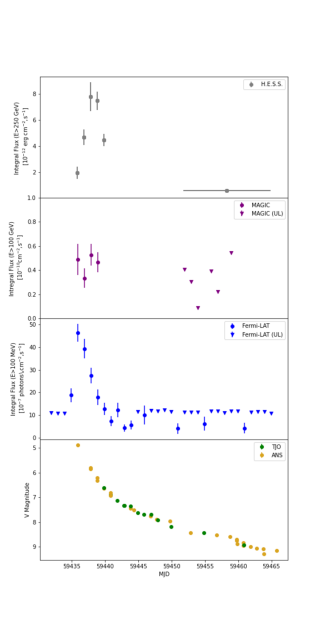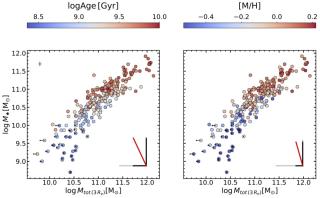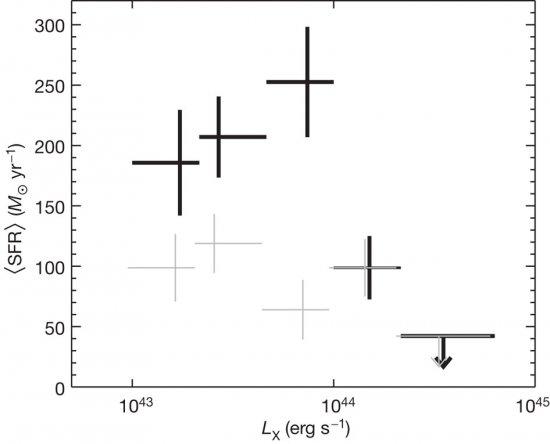The old, red stars that constitute the bulges of galaxies, and the massive black holes at their centres, are the relics of a period in cosmic history when galaxies formed stars at remarkable rates and active galactic nuclei (AGN) shone brightly as a result of accretion onto black holes. It is widely suspected, but unproved, that the tight correlation between the mass of the black hole and the mass of the stellar bulge results from the AGN quenching the surrounding star formation as it approaches its peak luminosity. X-rays trace emission from AGN unambiguously, whereas powerful star-forming galaxies are usually dust-obscured and are brightest at infrared and submillimetre wavelengths. Here we report submillimetre and X-ray observations that show that rapid star formation was common in the host galaxies of AGN when the Universe was 2-6 billion years old, but that the most vigorous star formation is not observed around black holes above an X-ray luminosity of 1044 ergs per second. This suppression of star formation in the host galaxy of a powerful AGN is a key prediction of models in which the AGN drives an outflow, expelling the interstellar medium of its host and transforming the galaxy's properties in a brief period of cosmic time.
Average star formation rates, (SFR), derived from averaged far-infrared luminosities of 1<z<3 AGNs, as a function of suLX.
Advertised on
References
It may interest you
-
 The development of the latest generation of Imaging Atmospheric Cherenkov Telescopes (IACTs) over recent decades has led to the discovery of new extreme astrophysical phenomena in the very-high-energy (VHE, E > 100 GeV) gamma-ray regime. Time-domain and multi-messenger astronomy are inevitably connected to the physics of transient VHE emitters, which show unexpected (and mostly unpredictable) flaring or exploding episodes at different timescales. These transients often share the physical processes responsible for the production of the gamma-ray emission, through cosmic-ray accelerationAdvertised on
The development of the latest generation of Imaging Atmospheric Cherenkov Telescopes (IACTs) over recent decades has led to the discovery of new extreme astrophysical phenomena in the very-high-energy (VHE, E > 100 GeV) gamma-ray regime. Time-domain and multi-messenger astronomy are inevitably connected to the physics of transient VHE emitters, which show unexpected (and mostly unpredictable) flaring or exploding episodes at different timescales. These transients often share the physical processes responsible for the production of the gamma-ray emission, through cosmic-ray accelerationAdvertised on -
 Despite the fundamental role that dark matter halos play in our theoretical understanding of galaxy formation and evolution, the interplay between galaxies and their host dark matter halos remains highly debated from an observational perspective. This lack of conclusive observational evidence ultimately arises from the inherent difficulty of reliably measuring dark matter (halo) properties. Based on detailed dynamical modeling of nearby galaxies, in this work we proposed a novel observational approach to quantify the potential effect that dark matter halos may have in modulating galaxyAdvertised on
Despite the fundamental role that dark matter halos play in our theoretical understanding of galaxy formation and evolution, the interplay between galaxies and their host dark matter halos remains highly debated from an observational perspective. This lack of conclusive observational evidence ultimately arises from the inherent difficulty of reliably measuring dark matter (halo) properties. Based on detailed dynamical modeling of nearby galaxies, in this work we proposed a novel observational approach to quantify the potential effect that dark matter halos may have in modulating galaxyAdvertised on -
 There is increasing evidence that single-star evolutionary models are unable to reproduce all of the observational properties of massive stars. Binary interaction has emerged as a key factor in the evolution of a significant fraction of massive stars. In this study, we investigate the helium (Y(He)) and nitrogen surface abundances in a comprehensive sample of 180 Galactic O-type stars with projected rotational velocities of ≤150 km/s. We found a subsample (~20% of the total, and ~80% of the stars with Y(He) ≥ 0.12) with a Y(He) and nitrogen abundance combined pattern that is unexplainable byAdvertised on
There is increasing evidence that single-star evolutionary models are unable to reproduce all of the observational properties of massive stars. Binary interaction has emerged as a key factor in the evolution of a significant fraction of massive stars. In this study, we investigate the helium (Y(He)) and nitrogen surface abundances in a comprehensive sample of 180 Galactic O-type stars with projected rotational velocities of ≤150 km/s. We found a subsample (~20% of the total, and ~80% of the stars with Y(He) ≥ 0.12) with a Y(He) and nitrogen abundance combined pattern that is unexplainable byAdvertised on
